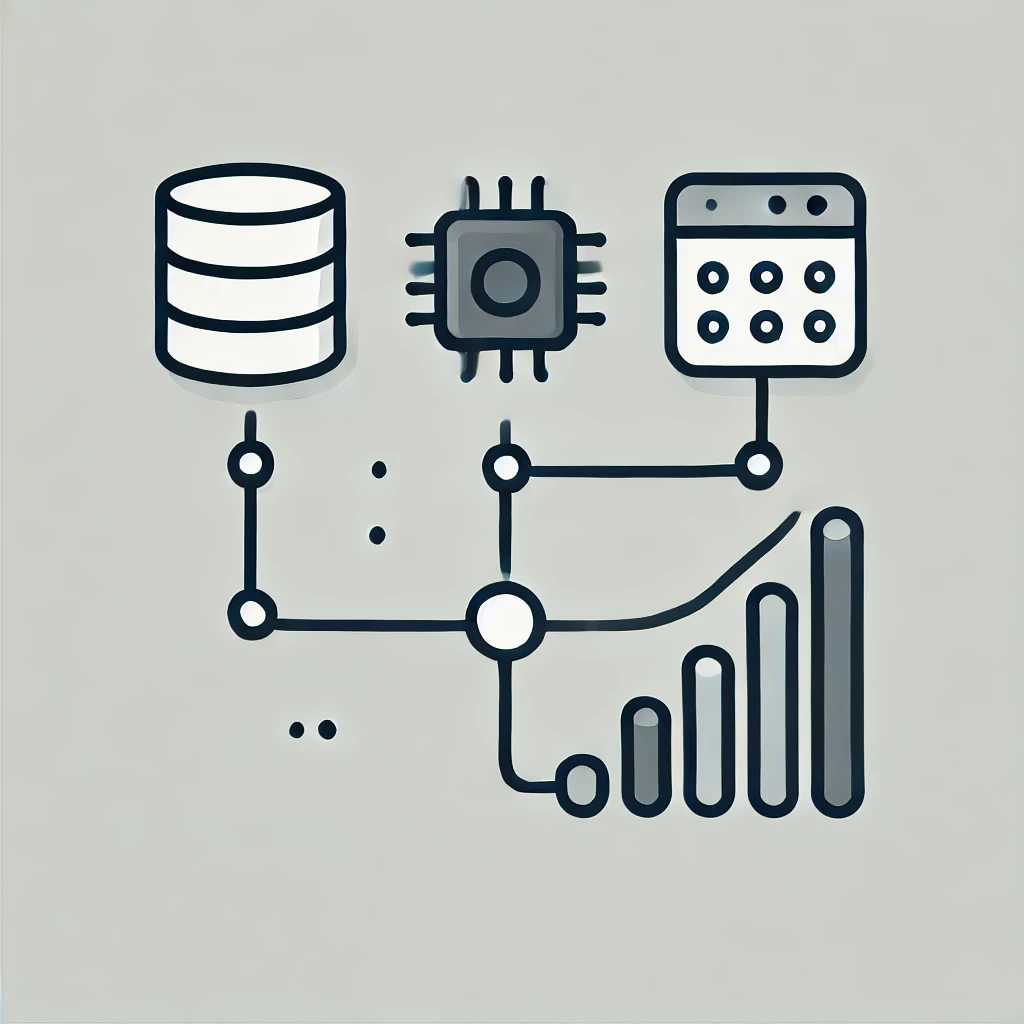Sep 15, 2024
Breadth-First Pipeline Parallelism: A Leap in Large Language Model Training

Robert

The paper “Breadth-First Pipeline Parallelism for Large Language Model Training” introduces a cutting-edge approach aimed at improving the efficiency of training large language models. It tackles some of the key inefficiencies in current training methods, such as the notorious "pipeline bubble" and underutilized GPUs, to offer a more streamlined process.
Key Concepts
1. Pipeline Parallelism
Pipeline parallelism refers to the technique where a model is divided across multiple GPUs, with each GPU handling a subset of the model's layers. Data flows through the GPUs in sequence, much like an assembly line, passing from one GPU to the next.
2. Pipeline Bubble
In traditional depth-first pipeline parallelism, there are periods of idle time where some GPUs wait for data to arrive from other stages. This idle time is called the pipeline bubble, and it is one of the primary sources of inefficiency in large-scale model training.
3. Breadth-First Approach
The breakthrough in this paper comes from adopting a breadth-first approach. Instead of processing one micro-batch all the way through the pipeline before moving to the next, this method processes multiple micro-batches simultaneously at different stages of the pipeline. This keeps all GPUs occupied, effectively reducing the idle time caused by pipeline bubbles.
4. Looping Placement
The authors introduce a clever way of arranging model layers across GPUs in a loop. This layout facilitates more efficient data flow, reducing the communication overhead between GPUs and improving overall training efficiency.
5. Micro-Batch Scheduling
One of the core innovations in this paper is how micro-batches are scheduled. The scheduling system is designed to maximize GPU utilization while managing memory constraints, balancing both speed and efficiency.
Performance and Scalability
The researchers tested this method on a massive 52-billion-parameter model using an impressive 4096 Nvidia V100 GPUs. Compared to state-of-the-art techniques like Megatron-LM, their breadth-first pipeline approach demonstrated significant improvements in training throughput and cost-effectiveness.
Scalability
What's particularly intriguing is how well this method scales as models grow larger and more GPUs are added. As language models continue to expand, techniques like breadth-first pipeline parallelism become critical for keeping training feasible and economical.
Limitations
One notable limitation is the high resource demand. The experiments were conducted on large GPU clusters, which may limit the broader adoption of this method, particularly in resource-constrained environments. Smaller labs or companies without access to large-scale GPU infrastructure might struggle to implement this approach.
The Bottom Line
Overall, this paper marks a significant advancement in the optimization of large language model training. By addressing inefficiencies in parallelism and scheduling, the authors have demonstrated how careful pipeline management can lead to substantial improvements in training speed and resource usage. As AI systems grow increasingly complex, innovations like these are essential to making training processes both scalable and cost-effective.
Sep 15, 2024
Breadth-First Pipeline Parallelism: A Leap in Large Language Model Training

Robert

The paper “Breadth-First Pipeline Parallelism for Large Language Model Training” introduces a cutting-edge approach aimed at improving the efficiency of training large language models. It tackles some of the key inefficiencies in current training methods, such as the notorious "pipeline bubble" and underutilized GPUs, to offer a more streamlined process.
Key Concepts
1. Pipeline Parallelism
Pipeline parallelism refers to the technique where a model is divided across multiple GPUs, with each GPU handling a subset of the model's layers. Data flows through the GPUs in sequence, much like an assembly line, passing from one GPU to the next.
2. Pipeline Bubble
In traditional depth-first pipeline parallelism, there are periods of idle time where some GPUs wait for data to arrive from other stages. This idle time is called the pipeline bubble, and it is one of the primary sources of inefficiency in large-scale model training.
3. Breadth-First Approach
The breakthrough in this paper comes from adopting a breadth-first approach. Instead of processing one micro-batch all the way through the pipeline before moving to the next, this method processes multiple micro-batches simultaneously at different stages of the pipeline. This keeps all GPUs occupied, effectively reducing the idle time caused by pipeline bubbles.
4. Looping Placement
The authors introduce a clever way of arranging model layers across GPUs in a loop. This layout facilitates more efficient data flow, reducing the communication overhead between GPUs and improving overall training efficiency.
5. Micro-Batch Scheduling
One of the core innovations in this paper is how micro-batches are scheduled. The scheduling system is designed to maximize GPU utilization while managing memory constraints, balancing both speed and efficiency.
Performance and Scalability
The researchers tested this method on a massive 52-billion-parameter model using an impressive 4096 Nvidia V100 GPUs. Compared to state-of-the-art techniques like Megatron-LM, their breadth-first pipeline approach demonstrated significant improvements in training throughput and cost-effectiveness.
Scalability
What's particularly intriguing is how well this method scales as models grow larger and more GPUs are added. As language models continue to expand, techniques like breadth-first pipeline parallelism become critical for keeping training feasible and economical.
Limitations
One notable limitation is the high resource demand. The experiments were conducted on large GPU clusters, which may limit the broader adoption of this method, particularly in resource-constrained environments. Smaller labs or companies without access to large-scale GPU infrastructure might struggle to implement this approach.
The Bottom Line
Overall, this paper marks a significant advancement in the optimization of large language model training. By addressing inefficiencies in parallelism and scheduling, the authors have demonstrated how careful pipeline management can lead to substantial improvements in training speed and resource usage. As AI systems grow increasingly complex, innovations like these are essential to making training processes both scalable and cost-effective.
Sep 15, 2024
Breadth-First Pipeline Parallelism: A Leap in Large Language Model Training

Robert

The paper “Breadth-First Pipeline Parallelism for Large Language Model Training” introduces a cutting-edge approach aimed at improving the efficiency of training large language models. It tackles some of the key inefficiencies in current training methods, such as the notorious "pipeline bubble" and underutilized GPUs, to offer a more streamlined process.
Key Concepts
1. Pipeline Parallelism
Pipeline parallelism refers to the technique where a model is divided across multiple GPUs, with each GPU handling a subset of the model's layers. Data flows through the GPUs in sequence, much like an assembly line, passing from one GPU to the next.
2. Pipeline Bubble
In traditional depth-first pipeline parallelism, there are periods of idle time where some GPUs wait for data to arrive from other stages. This idle time is called the pipeline bubble, and it is one of the primary sources of inefficiency in large-scale model training.
3. Breadth-First Approach
The breakthrough in this paper comes from adopting a breadth-first approach. Instead of processing one micro-batch all the way through the pipeline before moving to the next, this method processes multiple micro-batches simultaneously at different stages of the pipeline. This keeps all GPUs occupied, effectively reducing the idle time caused by pipeline bubbles.
4. Looping Placement
The authors introduce a clever way of arranging model layers across GPUs in a loop. This layout facilitates more efficient data flow, reducing the communication overhead between GPUs and improving overall training efficiency.
5. Micro-Batch Scheduling
One of the core innovations in this paper is how micro-batches are scheduled. The scheduling system is designed to maximize GPU utilization while managing memory constraints, balancing both speed and efficiency.
Performance and Scalability
The researchers tested this method on a massive 52-billion-parameter model using an impressive 4096 Nvidia V100 GPUs. Compared to state-of-the-art techniques like Megatron-LM, their breadth-first pipeline approach demonstrated significant improvements in training throughput and cost-effectiveness.
Scalability
What's particularly intriguing is how well this method scales as models grow larger and more GPUs are added. As language models continue to expand, techniques like breadth-first pipeline parallelism become critical for keeping training feasible and economical.
Limitations
One notable limitation is the high resource demand. The experiments were conducted on large GPU clusters, which may limit the broader adoption of this method, particularly in resource-constrained environments. Smaller labs or companies without access to large-scale GPU infrastructure might struggle to implement this approach.
The Bottom Line
Overall, this paper marks a significant advancement in the optimization of large language model training. By addressing inefficiencies in parallelism and scheduling, the authors have demonstrated how careful pipeline management can lead to substantial improvements in training speed and resource usage. As AI systems grow increasingly complex, innovations like these are essential to making training processes both scalable and cost-effective.

Get Started Now
Use Fine-Tuning To Improve your AI Models
Connect real-life data to continuously improve the performance of your model
Moyai ― All rights reserved.

Get Started Now
Use Fine-Tuning To Improve your AI Models
Connect real-life data to continuously improve the performance of your model
Moyai ― All rights reserved.

Get Started Now
Use Fine-Tuning To Improve your AI Models
Connect real-life data to continuously improve the performance of your model
Moyai ― All rights reserved.
